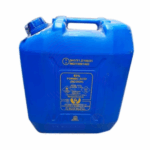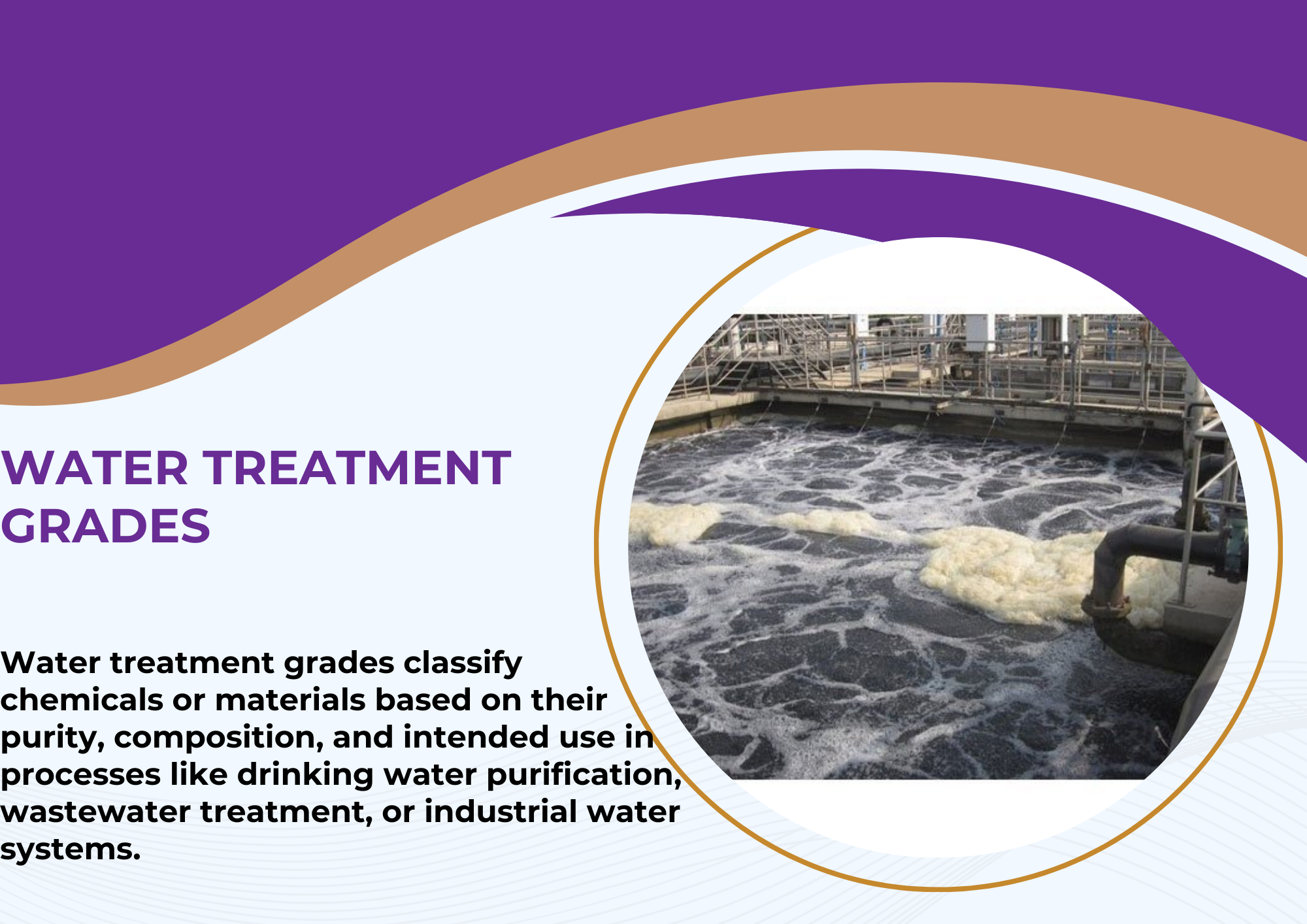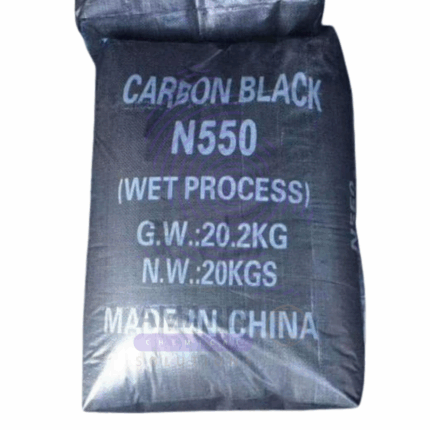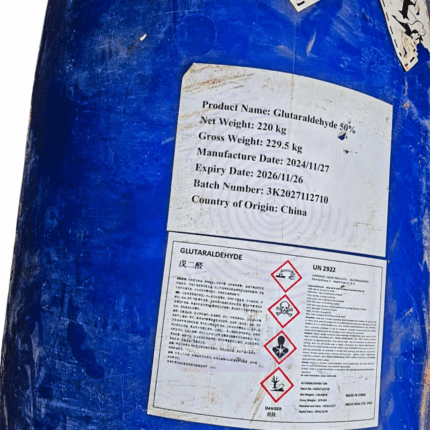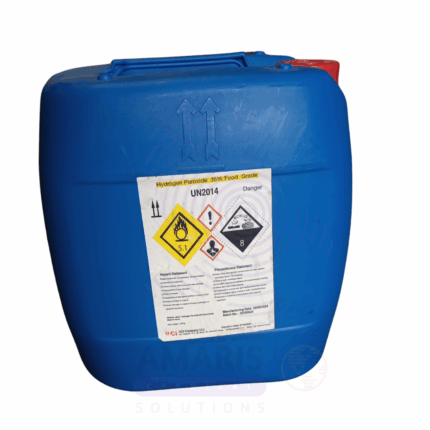Formaldehyde (Formalin)
$ 1.55 Original price was: $ 1.55.$ 1.44Current price is: $ 1.44.
Whatsapp Order
Formaldehyde (Formalin) is an aqueous solution containing approximately 37% formaldehyde by weight, stabilized typically with 10-15% methanol to prevent polymerization. It is a clear, colorless liquid with a pungent, penetrating odor. Formaldehyde is a simple aldehyde widely used as a disinfectant, preservative, and chemical intermediate. Formalin’s powerful antimicrobial and tissue-fixation properties make it essential in medical, laboratory, industrial, and manufacturing applications. It is one of the most commonly used chemicals worldwide for sterilization, embalming, and resin production.
Description
Table of Contents
Toggle
Formaldehyde (Formalin)
Primary Uses
- Medical and Laboratory
- Used extensively as a tissue fixative in histology, pathology, and anatomical studies to preserve biological specimens by cross-linking proteins and halting decay.
- Employed in embalming fluids to preserve human and animal remains.
- Used for sterilizing surgical instruments and disinfecting medical equipment and laboratories.
- Industrial Applications
- Key raw material in the manufacture of resins such as urea-formaldehyde, phenol-formaldehyde, and melamine-formaldehyde resins used in adhesives, laminates, plywood, and particleboard.
- Used as a fumigant and disinfectant in industrial sanitation and preservation.
- Utilized in the production of plastics, coatings, textiles, and paper treatments.
- Agriculture
- Used as a fungicide, bactericide, and pesticide in controlled applications.
- Applied to disinfect soil and farming equipment to control pathogens.
- Water Treatment
- Employed as a biocide in cooling towers, wastewater treatment, and industrial water systems to control microbial growth.
- Cosmetics and Consumer Products
- Used in very low concentrations as a preservative in cosmetic formulations (regulated due to toxicity concerns).
Secondary Uses
- Research and Analytical Chemistry
- Used as a standard reagent in chemical synthesis and analytical tests.
- Involved in polymerization reactions and cross-linking in biochemical applications.
- Textile Industry
- Applied in wrinkle-resistant and crease-proof finishing agents for fabrics.
- Waste Management
- Utilized in stabilization of sewage sludge and waste products to reduce pathogens and odors.
Additional information
| PACK SIZE |
35kg |
|---|
KEY PRODUCT FEATURES
1. Basic Identification Attributes
- Chemical Name (IUPAC): Methanal
- Common/Trade Name: Formalin, Formaldehyde Solution
- CAS Number: 50-00-0
- HS Code: 2912.11
- Molecular Formula: CH2O
- Synonyms: Formaldehyde solution, Methylene glycol (in solution), Methanal
2. Physical & Chemical Properties
- Physical State: Clear liquid
- Color & Odor: Colorless; strong pungent, irritating odor
- Boiling Point: ~100 °C (aqueous solution)
- Density: ~1.08 g/cm³
- Solubility: Completely miscible with water; soluble in alcohol and ether
- pH: Slightly acidic to neutral (4-7) depending on concentration
- Stability: Stable under cool, dark conditions; polymerizes upon prolonged storage or exposure to heat and light without stabilizer
3. Safety & Hazard Attributes
- Hazard Class (GHS): Flammable liquid (Category 3), Acute toxicity, Skin corrosion/irritation, Serious eye damage/irritation, Carcinogenicity (Category 1B)
- Toxicity: Highly toxic by inhalation, ingestion, and skin absorption
- Exposure Limits: OSHA PEL: 0.75 ppm (8-hr TWA), NIOSH REL: 0.016 ppm (ceiling)
4. Storage & Handling Attributes
- Storage Conditions: Store in tightly closed containers in a cool, well-ventilated area away from heat and ignition sources
- Container Type: Corrosion-resistant steel or plastic containers with vapor-tight seals
- Shelf Life: Typically 1-2 years if stored properly
- Handling Precautions: Use explosion-proof equipment; avoid vapor inhalation and direct contact; use personal protective equipment
5. Regulatory & Compliance Attributes
- Subject to strict regulations worldwide due to toxicity and carcinogenicity
- Listed as a hazardous substance by OSHA, EPA, REACH, and other authorities
- Usage limits and occupational exposure strictly controlled
6. Environmental & Health Impact
- Biodegradability: Readily biodegrades in the environment under aerobic conditions
- Ecotoxicity: Toxic to aquatic life with long-lasting effects
- Bioaccumulation: Not expected to bioaccumulate significantly
- Carcinogenicity/Mutagenicity: Classified as a human carcinogen (IARC Group 1) with mutagenic potential
SAFETY HANDLING PRECAUTIONS
Safety Handling Precautions
- PPE Required: Full protective clothing, chemical-resistant gloves, safety goggles, face shield, and respiratory protection with formaldehyde cartridges or supplied air
- Handling Guidelines: Work in well-ventilated or exhaust-controlled areas; avoid inhalation and skin contact; no open flames or sparks nearby
- Storage Measures: Store away from oxidizing agents, strong acids, and alkalis; keep containers sealed and upright
- Hygiene Practices: Wash hands and exposed skin thoroughly after handling; no eating, drinking, or smoking in work areas
First Aid Measures
- Inhalation: Move affected person to fresh air immediately; provide oxygen or artificial respiration if necessary; seek urgent medical care
- Skin Contact: Remove contaminated clothing; wash affected skin with plenty of water and soap; seek medical attention if irritation or burns occur
- Eye Contact: Rinse eyes with plenty of water for at least 15 minutes; obtain immediate medical attention
- Ingestion: Do NOT induce vomiting; rinse mouth; seek immediate medical help
Firefighting Measures
- Fire Hazards: Flammable liquid; vapors can form explosive mixtures with air; emits toxic gases (formaldehyde, carbon monoxide) on burning
- Extinguishing Media: Use alcohol-resistant foam, dry chemical, carbon dioxide (CO₂), or water spray
- Special Precautions: Firefighters must wear self-contained breathing apparatus and full protective gear
- Decomposition Products: Formaldehyde, carbon monoxide, carbon dioxide, and other toxic gases
Related products
Activated Carbon
Activated carbon is a highly porous, adsorptive material processed to have an exceptionally large surface area (typically 500-1500 m²/g) through thermal or chemical activation of carbon-rich source materials. This versatile adsorbent exists in powdered (PAC), granular (GAC), pelletized, and extruded forms, with pore structures specifically engineered for different applications ranging from water purification to gas treatment. Its extended surface area and complex pore network (micropores <2nm, mesopores 2-50nm, macropores >50nm) enable superior physical adsorption of contaminants through van der Waals forces, as well as chemical interactions with surface functional groups.
Dicumyl Peroxide
Dicumyl Peroxide (DCP) is a widely used organic peroxide with powerful free radical initiator properties. It appears as a white crystalline solid with a characteristic odor and is primarily employed as a cross-linking agent and polymerization initiator in the plastics and rubber industries. Due to its ability to generate free radicals upon thermal decomposition, it facilitates curing and cross-linking of polymers, improving mechanical properties and heat resistance. Dicumyl Peroxide is a key component in manufacturing processes for polyethylene, polypropylene, EPDM rubber, and other elastomers.
Ferrous Sulphide
Ferrous Sulphide (FeS) is an inorganic iron-sulfur compound appearing as a dark gray to black crystalline powder or solid. It has low solubility in water but reacts with acids to release hydrogen sulfide gas. It is used in numerous industrial and chemical processes due to its sulfide content and reactive properties. Ferrous Sulphide serves as a key intermediate in metallurgy, chemical synthesis, wastewater treatment, pigment production, and more.
Glutardehyde
Glutardehydeis a potent biocidal agent and chemical sterilant widely used in healthcare, water treatment, and industrial applications. It is a colorless to pale yellow oily liquid with a pungent, sharp odor. Chemically, it is a dialdehyde, primarily valued for its ability to cross-link proteins, making it highly effective as a disinfectant, fixative, and preservative. Typically supplied in concentrations of 25% or 50% aqueous solutions, Glutaraldehyde is used where high-level disinfection is needed—especially against bacteria, viruses, fungi, and spores. Its versatility also extends to tanning, laboratory science, and wastewater treatment.
Hydrogen Peroxide Food Grade
Hydrogen Peroxide Food Grade is a highly concentrated aqueous solution of hydrogen peroxide (H₂O₂), formulated specifically for use in food processing and related applications. It appears as a clear, colorless liquid with a slightly sharp, acrid odor. Renowned for its powerful oxidizing and bleaching properties, hydrogen peroxide is a strong antimicrobial agent and environmentally friendly disinfectant that decomposes into water and oxygen, leaving no harmful residues. The food-grade designation ensures compliance with strict purity standards, making it suitable for direct and indirect food contact uses, including sterilization, sanitation, and preservation.
Lysol
Lysol Cresol BP is a concentrated solution of cresol, a phenolic compound derived from coal tar or petroleum. It is a potent disinfectant and antiseptic with strong antimicrobial properties. This product typically contains 50% cresol in water or solvent and is used extensively in industrial, healthcare, agricultural, and household settings for its broad-spectrum efficacy against bacteria, fungi, and viruses. It appears as a colorless to pale yellow liquid with a characteristic phenolic odor and is highly effective for sterilization, deodorization, and sanitation.
Nyclone
Nyclone is a high-purity chlorine-based chemical used primarily as a disinfectant and bleaching agent. It delivers effective sanitization in water treatment, industrial cleaning, and chemical manufacturing. Known for its strong oxidizing properties, Nyclone (Chlorine) is widely applied to control microbial contamination, remove stains, and support various chemical synthesis processes.
Tricide 30E
Tricide 30E is a versatile emulsifiable concentrate formulation primarily used as a broad-spectrum biocide. It is designed to control bacterial, fungal, and algal growth in industrial water treatment, cooling towers, paper mills, and oilfield applications. The product combines potent antimicrobial agents to effectively inhibit microbial contamination, biofilm formation, and corrosion, thereby enhancing system efficiency and longevity. Tricide 30E is favored for its ease of use, stability in diverse water chemistries, and strong efficacy against a wide range of microorganisms.


 Preservatives(food)
Preservatives(food) Flavor Enhancers
Flavor Enhancers Acidulants
Acidulants Sweeteners
Sweeteners Antioxidants
Antioxidants Colorants(food)
Colorants(food) Nutraceutical Ingredients (food)
Nutraceutical Ingredients (food) Nutrient Supplements
Nutrient Supplements Emulsifiers
Emulsifiers
 Collectors
Collectors Dust Suppressants
Dust Suppressants Explosives and Blasting Agents
Explosives and Blasting Agents Flocculants and Coagulants
Flocculants and Coagulants Frothers
Frothers Leaching Agents
Leaching Agents pH Modifiers
pH Modifiers Precious Metal Extraction Agents
Precious Metal Extraction Agents
 Antioxidants(plastic)
Antioxidants(plastic) Colorants (Pigments, Dyes)
Colorants (Pigments, Dyes) Fillers and Reinforcements
Fillers and Reinforcements Flame Retardants
Flame Retardants Monomers
Monomers Plasticizers
Plasticizers Polymerization Initiators
Polymerization Initiators Stabilizers (UV, Heat)
Stabilizers (UV, Heat)
 Antifoaming Agents
Antifoaming Agents Chelating Agents
Chelating Agents Coagulants and Flocculants
Coagulants and Flocculants Corrosion Inhibitors
Corrosion Inhibitors Disinfectants and Biocides
Disinfectants and Biocides Oxidizing Agents
Oxidizing Agents pH Adjusters
pH Adjusters Scale Inhibitors( water)
Scale Inhibitors( water)
 Antioxidants(cosmetic)
Antioxidants(cosmetic) Emollients
Emollients Fragrances and Essential Oils
Fragrances and Essential Oils Humectants
Humectants Preservatives
Preservatives Surfactants(cosmetic)
Surfactants(cosmetic) Thickeners
Thickeners UV Filters
UV Filters
 Fertilizers
Fertilizers Soil Conditioners
Soil Conditioners Plant Growth Regulators
Plant Growth Regulators Animal Feed Additives
Animal Feed Additives Biostimulants
Biostimulants Pesticides (Herbicides, Insecticides, Fungicides)
Pesticides (Herbicides, Insecticides, Fungicides)
 Active Pharmaceutical Ingredients (APIs)
Active Pharmaceutical Ingredients (APIs) Excipients
Excipients Solvents(pharmaceutical)
Solvents(pharmaceutical) Antibiotics
Antibiotics Antiseptics and Disinfectants
Antiseptics and Disinfectants Vaccine Adjuvants
Vaccine Adjuvants Nutraceutical Ingredients (pharmaceutical)
Nutraceutical Ingredients (pharmaceutical) Analgesics & Antipyretics
Analgesics & Antipyretics
 Analytical Reagents
Analytical Reagents Solvents(lab)
Solvents(lab) Chromatography Chemicals
Chromatography Chemicals Spectroscopy Reagents
Spectroscopy Reagents microbiology-and-cell-culture-reagents
microbiology-and-cell-culture-reagents Molecular Biology Reagents
Molecular Biology Reagents Biochemical Reagents
Biochemical Reagents Inorganic and Organic Standards
Inorganic and Organic Standards Laboratory Safety Chemicals
Laboratory Safety Chemicals Specialty Laboratory Chemicals(Special Laboratory Equipment)
Specialty Laboratory Chemicals(Special Laboratory Equipment)
 Demulsifiers
Demulsifiers Hydraulic Fracturing Fluids
Hydraulic Fracturing Fluids Scale Inhibitors(oil)
Scale Inhibitors(oil) Surfactants(oil)
Surfactants(oil) Drilling Fluids
Drilling Fluids
 Dyes and Pigments
Dyes and Pigments Bleaching Agents
Bleaching Agents Softening Agents
Softening Agents Finishing Agents
Finishing Agents Antistatic Agents
Antistatic Agents
 Admixtures
Admixtures Waterproofing Agents
Waterproofing Agents Sealants and Adhesives
Sealants and Adhesives Curing Compounds
Curing Compounds Concrete Repair Chemicals
Concrete Repair Chemicals Anti-Corrosion Coatings
Anti-Corrosion Coatings
 Surfactants(cleaning)
Surfactants(cleaning) Builders
Builders Enzymes
Enzymes Solvents (Cleaning)
Solvents (Cleaning) Fragrances
Fragrances
 Electronic Chemicals
Electronic Chemicals Catalysts
Catalysts Lubricants
Lubricants Photographic Chemicals
Photographic Chemicals Refrigerants
Refrigerants Automotive chemicals
Automotive chemicals Pyrotechnic Chemicals
Pyrotechnic Chemicals
 Biodegradable Surfactants
Biodegradable Surfactants Bio-based Solvents
Bio-based Solvents Renewable Polymers
Renewable Polymers Carbon Capture Chemicals
Carbon Capture Chemicals Wastewater Treatment Chemicals
Wastewater Treatment Chemicals
 Pigments
Pigments Solvents(paint)
Solvents(paint) Specialty Coatings
Specialty Coatings Binders/Resins
Binders/Resins Additives
Additives Driers
Driers Anti-Corrosion Agents
Anti-Corrosion Agents Functional Coatings
Functional Coatings Application-Specific Coatings
Application-Specific Coatings
 Fresh Herbs
Fresh Herbs Ground Spices
Ground Spices Whole Spices
Whole Spices Spice Blends
Spice Blends Dried Herbs
Dried Herbs
 Leavening Agents
Leavening Agents Dough Conditioners
Dough Conditioners Flour Treatments
Flour Treatments Fat Replacers
Fat Replacers Decoratives
Decoratives Preservatives(baking)
Preservatives(baking)
 Plasticizers & Softeners
Plasticizers & Softeners Reinforcing Agents
Reinforcing Agents Adhesion Promoters
Adhesion Promoters Vulcanizing Agents
Vulcanizing Agents Antidegradants
Antidegradants Blowing Agents
Blowing Agents Fillers & Extenders
Fillers & Extenders Accelerators & Retarders
Accelerators & Retarders

